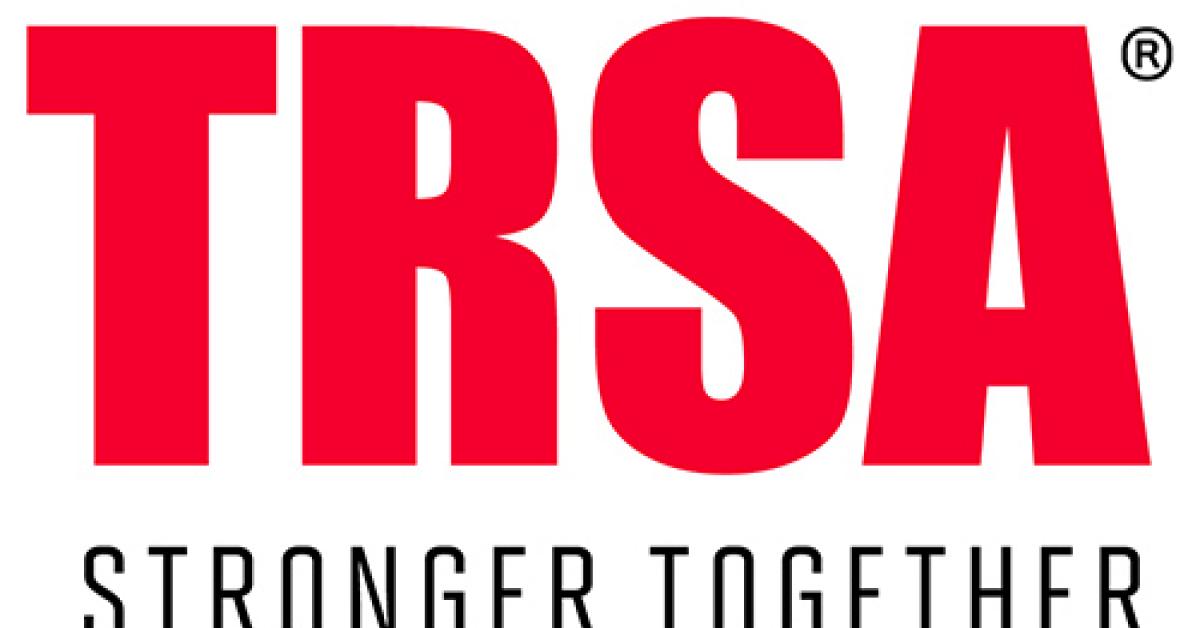CHICAGO — For Toledo’s NuCentury Textile Services, 2012 began under horrible circumstances.
Published reports indicate that, on Jan. 3 last year, an employee failed to turn off and lock a folder before servicing it. His clothes got caught in the machine, and his hand and forearm were injured. He later died from complications while recovering at home.
The Occupational Safety & Health Administration (OSHA) cited NuCentury for several alleged safety violations and fined it $40,000. NuCentury hired a safety consultant and took other steps to improve its safety program, prompting OSHA to lower the fine to $19,600.
Despite best efforts, on-the-job accidents do occur in and around textile service facilities, and employees are injured or, on rare occasions, even killed.
There are resources available to help an operator ensure his plant is being run safely, and among them is SafeTRSA, a program offered by the Textile Rental Services Association (TRSA).
It provides safety training materials to TRSA members and measures the industry’s progress in implementing enhanced practices to reduce and eliminate occupational injuries and illnesses in plants and depots, according to Ken Koepper, director of marketing and public relations for the association.
Success is quantified when TRSA administers its annual survey of its members’ occupational injury and illness data, he explains. “Such tracking over the past several years has prompted TRSA’s creation of industry-specific initiatives and resources to focus on the industry’s highest risk areas and those cited most frequently by OSHA.”
This has resulted in TRSA members’ adoption of proven policies and procedures for maintaining equipment (lockout/tagout), handling soiled linen (especially bloodborne pathogens) and working in confined spaces, Koepper says.
“The networking and information-sharing between members on such matters has generated new programming for educational institutes and conferences as well as publications, online resources, videos and more.”
Membership-wide safety statistics enable TRSA companies to easily compare their improvements to the industry norm and foster further gains.
Data from 2011, reported in 2012, will be released by TRSA shortly.
“Our survey from 2010 covered 59 textile services companies operating 720 processing facilities and depots,” Koepper says. “It showed that in the prior four years, the industry experienced across-the-board reductions in its injury and illness rates. TRSA calculates separate TRIR and DART rates for plants and depots.
“The new report will reflect further reductions. Also, participation in the survey increased in 2012, to 66 companies operating 792 facilities.”
TRIR stands for Total Recordable Incidence Rate. DART is short for Day Aways, Restricted or Transferred.
From 2006 to 2010, TRSA respondents reduced their total number of recordable injuries and illnesses per 100 employees (TRIR Rate) from 9.5 to 5.5, Koepper says. Injuries and illnesses per 100 employees resulting in days away from work, job restrictions and/or job transfers (DART Rate) dropped from 5.8 to 3.9.
TRSA also calculates separate figures for the industrial and linen segments. The new report will cross-reference these with the federal Bureau of Labor Statistics’ (BLS) industry-wide figures, according to Koepper.
In 2011, at TRSA’s request, for the first time in roughly a decade, BLS published separate TRIR and DART rates for textile services (industrial and linen) as opposed to the agency’s prior practice of only consolidating them with all other types of commercial laundry (mostly dry cleaning and coin laundry).
Koepper says TRSA requested this reporting enhancement as a means for tracking future industry-wide improvements.
“Although TRSA and BLS results show that the industry is still short of achieving its ultimate objective—eliminating occupational injuries and illnesses in its facilities—these reports also demonstrate dramatic progress towards achieving that goal,” he says.
TRSA hosted a Safety Summit last year that focused on enhancing safety cultures across the industry.
“It had been four years since the industry conducted a single-subject meeting on safety,” Koepper says. “Although it was a seminar topic in conferences and educational institutes, too much time had passed since an event dedicated to the subject was held.”
Audiences for prior safety-focused meetings had consisted mostly of hands-on safety professionals. The Summit concept involved the highest levels of textile services management, elevating TRSA’s involvement in guiding operators in increasing the prominence of safety in their corporate cultures.
“The Summit went beyond day-to-day injury prevention tactics,” Koepper says. “It examined options the industry could exercise collectively to hire the proper expertise, immediately assess the greatest risks and devise near-term action plans for developing standards and communicating them to operators.”
The TRSA Safety Committee is working on those plans, and a second Safety Summit has been scheduled for May 22 in Indianapolis.
Koepper says he’s seen the industry make great strides in automation in recent decades.
Automated material handling reduces the “manual labor requirement for this purpose. Soil bags are hoisted and carried on rails automatically to washers. Computing drives clean-side garment sorting. To prevent hazardous discharge of energy, smart systems are limiting access to areas where electricity must be controlled to ensure machines don’t start unexpectedly.”
But automation isn’t likely to ever completely eliminate all the different types of human movement required to provide textile services.
“Route service, for example, will always involve an individual walking from a truck to a customer’s receiving area,” Koepper says. “To reduce exposure, the industry has increased its proficiency in safer lifting, carrying and pushing. More individuals are cross-trained to perform different jobs in the course of a day to curtail redundant motion.”
TRSA is guiding members in their quest to convince every employee that safety comes first and productivity second.
While it is still a huge job to get to zero incidents in an industry so heavily dependent on athleticism and individual workers’ judgment, Koepper says TRSA is pleased with the gains of recent years and believes more improvement lies ahead.
Have a question or comment? E-mail our editor Matt Poe at [email protected].

